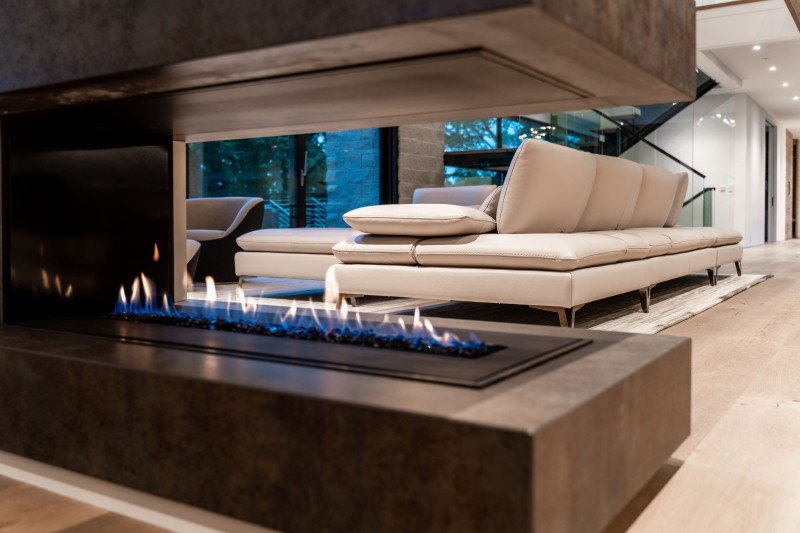Best Value Fireplaces: An In-Depth Guide
The fireplace has long been considered the heart of a home, supplying warmth, atmosphere, and a centerpiece for social events. However, browsing through numerous options can be frustrating, especially with spending plan constraints in mind. Fireplace Deals presents a useful guide on the best value fireplaces, detailing their types, features, and benefits to help house owners make a wise option.
Types of Fireplaces
Fireplaces come in a variety of styles and types, each with different characteristics, expenses, and advantages. Here's a detailed take a look at the most common types of fireplaces readily available in the market today.
| Kind of Fireplace | Description | Average Cost | Pros | Cons |
|---|---|---|---|---|
| Wood-Burning | Burn logs to create heat and ambiance. | ₤ 1,500 - ₤ 5,000 | Genuine experience, natural heat | Needs routine maintenance, less efficient |
| Gas Fireplaces | Utilizes gas or gas to produce heat. | ₤ 2,000 - ₤ 5,000 | Easy to utilize, cleaner than wood | Restricted to gas supply, setup costs |
| Electric Fireplaces | Replicates flames with LED technology and produces heat by means of electrical energy. | ₤ 200 - ₤ 3,000 | Easy setup, installation flexibility | Less authentic feel, higher operating expenses |
| Pellet Stoves | Use compressed wood or biomass pellets, supplying an environment-friendly choice. | ₤ 3,000 - ₤ 4,500 | Efficient, low emissions | Requirements electrical power to operate, requires storage for pellets |
| Ethanol Fireplaces | Burns ethanol fuel, producing flames that do not require a chimney. | ₤ 300 - ₤ 2,500 | No vents required, portable | Higher fuel expense, safety issues |
Aspects to Consider When Choosing a Fireplace
Choosing the right fireplace is not practically visual appeals; it also involves practical considerations. Here are vital factors to bear in mind:
1. Spending plan
- Determine how much you want to invest. Keep in mind that installation and maintenance expenses can add up.
2. Space and Size
- Make sure the fireplace fits well within the room, thinking about both the space available and the heating requirements.
3. Fuel Type
- Choose the fuel source based upon schedule, cost, and the type of atmosphere you want to achieve.
4. Efficiency
- Select systems with high-efficiency scores to guarantee you are getting the most value for your cash in terms of heat output.
5. Aesthetic Appeal
- Select a design and design that matches existing design and enhances the general appeal of the area.
6. Laws
- Know regional guidelines, allows, and building codes that may affect your fireplace installation.
Top Best Value Fireplaces
Based on client evaluations, specialist viewpoints, and overall value for cash, here are a few of the best value fireplaces presently offered in the market:
1. DuraVent Pellet Stove
- Type: Pellet
- Typical Cost: ₤ 2,000
- Highlights: Highly efficient with low emissions, making it an excellent alternative for environmentally-conscious house owners.
2. Napoleon B36NTR-1
- Type: Gas
- Typical Cost: ₤ 2,500
- Highlights: This fireplace is aesthetically appealing and extremely efficient, with a streamlined style and adjustable flame.
3. Duraflame Electric Heater Stove
- Type: Electric
- Typical Cost: ₤ 200
- Highlights: Affordable and portable, perfect for smaller spaces or adding atmosphere to a room without long-term installation.
4. Genuine Flame Juliet Gel Fireplace
- Type: Ethanol
- Typical Cost: ₤ 300
- Highlights: An elegant choice for modern spaces that requires no venting, making it flexible and easy to set up.
5. Vogelzang VG5790
- Type: Wood-Burning
- Typical Cost: ₤ 800
- Emphasizes: Offers a traditional wood-burning experience with a smooth modern design, ideal for those who value the timeless ambiance.
Frequently Asked Questions (FAQs)
Q1: What is the most affordable fireplace choice?
A1: Electric fireplaces tend to be the most cost-efficient in terms of initial purchase price and installation, but can have higher operating expenses compared to gas or pellet units.
Q2: Are gas fireplaces safer than wood-burning fireplaces?
A2: Yes, gas fireplaces generally produce fewer emissions and posture a lower danger of chimney fires as they don't produce creosote like wood-burning units.
Q3: Can I install a fireplace myself?
A3: While some electric fireplaces enable easy self-installation, other types, especially gas and wood-burning designs, typically require professional installation due to venting and safety concerns.
Q4: How do I maintain my fireplace?
A4: Regular maintenance consists of cleaning the chimney (for wood-burning fireplaces), examining for gas leakages (in gas systems), and guaranteeing proper ventilation for electric models.
Q5: Is an ethanol fireplace a great option?
A5: Ethanol fireplaces are appealing for their modern design and ease of installation. However, they can be less efficient and more expensive to operate long-term compared to other fuel types.
Selecting a value fireplace that satisfies your visual choices and useful needs includes extensive research study and consideration. By understanding various types of fireplaces, their associated expenses, and benefits, homeowners can make informed decisions that will not just fit their budget but likewise enhance the warm and welcoming environment of their homes. Whether selecting Cheap Fireplaces USA , gas, wood-burning, pellet, or ethanol design, the ideal fireplace awaits to change your living space.

